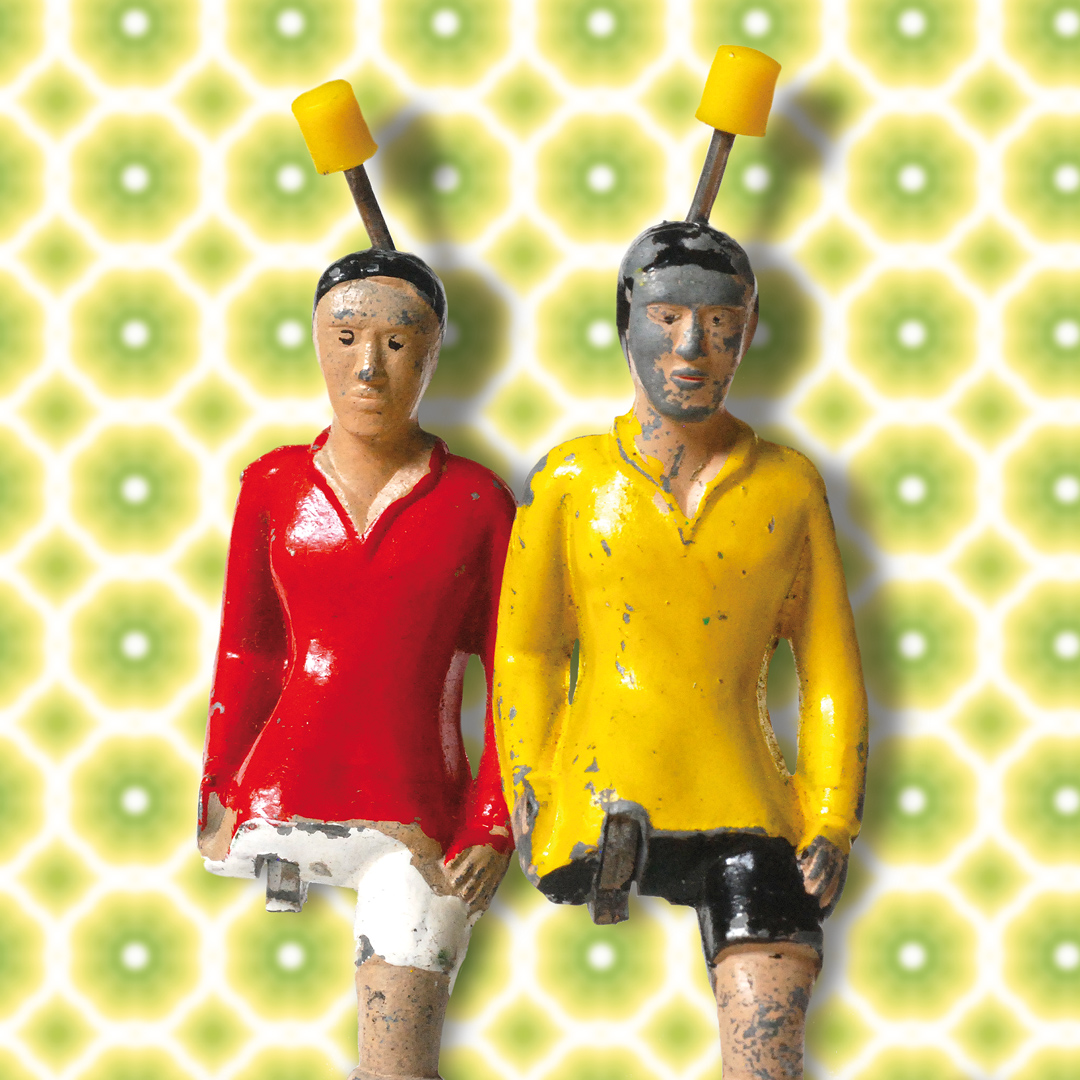Kick and Tipp
We played a lot of Tipp-Kick during the 70s. The player miniatures had to endure a lot, sometimes we even sanded off their shooting legs to improve the technique.

Sönke Kirsch from Dortmund (*1965) followed a trend in the early 70s with his child-like excitement for Tipp-Kick. During the World Cup of 1974 in Germany, the game, which was invented in 1924 by salesman Edwin Mieg, experienced a downright boom. For the first time, matches could be replayed with miniatures in the colours of competing national teams.
Kirsch’s room as a child was decorated with colourful wallpapers, his small Tipp-Kick miniatures were yellow and red – a colour combination he nowadays interprets as Borussia Dortmund against Bayern Munich. Back then, Kirsch lived in Rendsburg and it was a tradition in Schleswig-Holstein to sand off a little bit of the kicking leg of the figurines to improve the kicking technique. This optimisation was not always successful – sometimes a miniature lost a leg. “But I never was able to throw things away, thus the miniatures were not thrown in the trash but into a box for well-deserved reservists and veterans.
In 1926, during the first presentation of the game in front of (!) the building of the toy fair in Leipzig, no one might have suspected that the game would still be played almost 100 years later.
The principle is easy and still is: A little metal figurine, which leg is actuated by pushing down a button on the head, has to kick an angular “ball” into the goal. This proved to be tricky due to the low mass of the figurine, so Mieg produced them out of lead from 1925 on. The demand grew, 1938 a factory building was constructed and from there on the miniatures were cast out of zinc in their own factory.
In 1948 Mieg died and his sons took over the company. The game did hardly change until the 50s, only the goals and the ball were cast in plastic from there on.
When Germany won the world cup in 1954, this also meant a breakthrough for Tipp-Kick: 180.000 games were sold that year in Germany.
Since then, demand rises and falls – the iconic game still sells and the company is still run by the family.
On time for the women’s football world cup in Germany in 2011 a female figurine was released “[…] a subtly feminine metal player who unifies athleticism and femininity” says the company on their website.
For the 100th anniversary of the game, coinciding with the EURO 24, there will be a special edition for the game. The historic figurines are, together with the play-room wallpaper, on display at the Briefkästchen
More information on the history of the game available at Tipp-Kick.
Text: Daniela Berglehn
Translation: Matthias Fabry